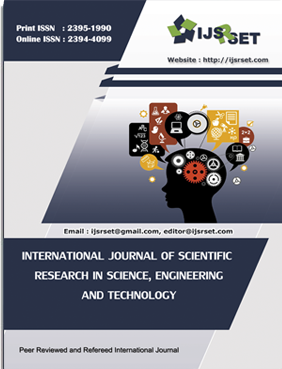A Survey on Multi-Document Summarizer
Keywords:
Multi-Document Summarization; Clustering Based; Extractive and Abstractive approach; Ranked Based; LDA Based; Natural Language ProcessingAbstract
Natural language processing provides Text Summarization which is the most popular application for information compression. Text summarization is a process of producing a summary by reducing the size of original document and pertaining important information of original document. There is arising a need to provide high quality summary in less time because in present time, the growth of data increases tremendously on World Wide Web or on user’s desktops so Multi-Document summarization is the best tool for making summary in less time. This paper presents a survey of existing techniques with the novelties highlighting the need of intelligent Multi-Document summarizer.
References
- Van Britsom, Daan, Antoon Bronselaer, and Guy De Tre. "Using data merging techniques for generating multi-document summarizations." in IEEE trans. On fuzzy systems, pp 1 -17, 2013.
- Bagalkotkar, A., Kandelwal, A., Pandey, S., &Kamath, S. S. (2013, August). A Novel Technique for Efficient Text Document Summarization as a Service.InAdvances in Computing and Communications (ICACC), 2013 Third International Conference on (pp. 50-53). IEEE.
- Gupta, V. K., &Siddiqui, T. J. (2012, December). Multi-document summarization using sentence clustering. In Intelligent Human Computer Interaction (IHCI), 2012 4th International Conference on (pp. 1-5).IEEE.
- Ferreira, Rafael, Luciano de Souza Cabral, Rafael DueireLins, Gabriel Pereira e Silva, Fred Freitas, George DC Cavalcanti, Rinaldo Lima, Steven J. Simske, and Luciano Favaro. "Assessing sentence scoring techniques for extractive text summarization." Expert systems with applications 40, no. 14 (2013): 5755-5764.
- Guran, A., N. G. Bayazit, and E. Bekar. "Automatic summarization of Turkish documents using non-negative matrix factorization." In Innovations in Intelligent Systems and Applications (INISTA), 2011 International Symposium on, pp. 480-484.IEEE, 2011.
- ShashiShekhar “A WEBIR Crawling Framework for Retrieving Highly Relevant Web Documents: Evaluation Based on Rank Aggregation and Result Merging Algorithms” in Conf. on Computational Intelligence and Communication Systems, pp 83-88 ,2011.
- Manjula.K.S “Extracting Summary from Documents Using K-Mean Clustering Algorithm” in IEEE IJARCCE, pp 3242-3246, 2013.
- Gawali, Madhuri, MrunalBewoor, and SuhasPatil. "Review: Evaluating and Analyzer to Developing Optimized Text Summary Algorithm."
- P.Sukumar, K.S.Gayathri “Semantic based Sentence Ordering Approach for Multi-Document Summarization” in IEEE IJRTE, pp 71-76, 2014.
- JinqiangBian “Research On Multi-document Summarization Based On LDA Topic Model” in IEEE Conf. On Conference on Intelligent Human-Machine Systems and Cybernetics ,pp 113-116 , 2014
- Li, Yuhua, David McLean, Zuhair A. Bandar, James D. O'shea, and Keeley Crockett. "Sentence similarity based on semantic nets and corpus statistics."Knowledge and Data Engineering, IEEE Transactions on 18, no. 8 (2006): 1138-1150.
- Harshad Jain et. al. “Context Sensitive Text Summarization Using K Means Clustering Algorithm” IJSCE, pp no 301-304, 2012.
- García-Hernández, René Arnulfo, and YuliaLedeneva. "Word Sequence Models for Single Text Summarization."In Advances in Computer-Human
- Ferreira, R., de Souza Cabral, L., Lins, R. D., Pereira e Silva, G., Freitas, F., Cavalcanti, G. D., .Favaro, L. (2013). Assessing sentence scoring techniques for extractive text summarization. Expert systems with applications, 40(14), 5755-5764.
- Liu Na et al.“Mixture of Topic Model for Multi-document Summarization” In 2014 26th Chinese Control and Decision Conference (CCDC), IEEE, pp no 5168-5172.
- RachitArora et al. “Latent Dirichlet Allocation and Singular Value Decomposition based Multi-Document Summarization” In2008 Eighth IEEE International Conference on Data Mining, pp no 713-718.
- HongyanLill et al. “Multi-document Summarization based on Hierarchical Topic Model” HongyanLill, pp no 88-91.
- Liu, N., Tang, X. J., Lu, Y., Li, M. X., Wang, H. W., & Xiao, P. (2014, July). Topic-Sensitive Multi-document Summarization Algorithm. In Parallel Architectures, Algorithms and Programming (PAAP), 2014 Sixth International Symposium on (pp. 69-74). IEEE.
- Yan, Su, and Xiaojun Wan. "SRRank: Leveraging Semantic Roles for Extractive Multi-Document Summarization." Audio, Speech, and Language Processing, IEEE/ACM Transactions on 22, no. 12 (2014): 2048-2058.
- Yang Wei “Document Summarization Method based on Heterogeneous Graph” In 2012 9th International Conference on Fuzzy Systems and Knowledge Discovery (FSKD 2012), pp no. 1285-1289, 2012.
The easiest Rubik's Cube solution is available here in many languages. Learn it in an hour to impress your friends.
Downloads
Published
Issue
Section
License
Copyright (c) IJSRSET

This work is licensed under a Creative Commons Attribution 4.0 International License.

